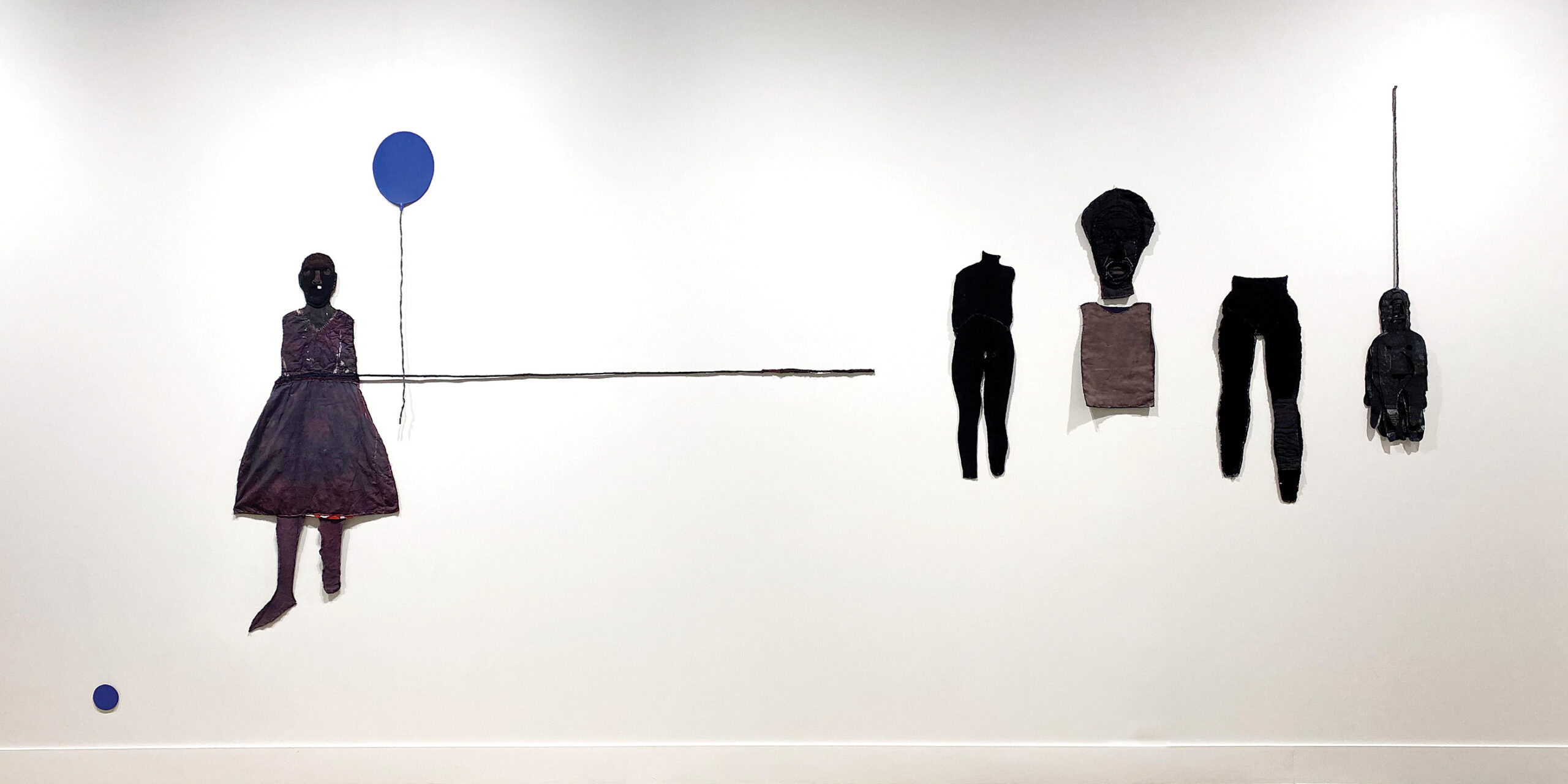Faces — or the absence thereof — dominate the works in the spring exhibitions of Art Galleries at Black Studies. But “Wave Patterns” by Michael A. Booker and “(un)knowing” by Alicia Henry shouldn’t be taken at face value.
“This is a moment where things are in flux globally. It feels like, at many times, we fall back onto the default of what we think we know,” says Phillip Townsend, curator of art for Art Galleries at Black Studies (AGBS). “And I think both of these exhibitions are challenging us to think about perception, but also the real idea of flexibility … what we think we know about certain subjects, topics and themes, and asking us to rethink them or be open to rethinking them.”
Henry, an artist in Nashville, Tennessee, uses textiles, found materials and other media to create human heads or figures that are manipulated rather than true to life. “By distorting and transforming the human form, Henry challenges traditional notions of identity, making way for new narratives and interpretations,” Townsend writes in the exhibit notes. The exhibition challenges the viewer to acknowledge that we can’t ever truly understand everything about the human experience but that freedom can be found in accepting that reality.
The works from Maryland-based Booker weave together Black hairstyles, the ocean, and flags used in the nautical International Code of Signals. The play on “waves” is clear, but Booker also examines how these different symbols communicate ideas to the viewer. His subjects often are looking away — their facial expressions concealed — so the hair becomes the focus.
Townsend’s exhibition essays, he says, are designed to “engage with the work and reframe it so that a person who doesn’t have a background in art can access the work.”

But unlike at some museums that offer extensive descriptions and interpretations about each piece, the labels on these works are brief. On the Booker pieces, for instance, the code behind the flags is unexplained, forcing the viewer to try to figure out what is being communicated and what is being concealed. That lack of detail is intentional, Townsend says.
“Our museum is a space for critical thinking and critical dialogue. And I don’t want to impede that by providing too much information,” he says. “So I want people to come in, especially students, and think a bit critically about … why the space exists, why we are presenting this particular exhibition and why these objects are in this exhibition.”
The two gallery spaces feature exhibitions twice a year, but art can also be found on every floor of the Gordon-White Building. AGBS uses these project spaces to rotate art from its nearly 1,300-piece permanent collection and also bring in works from Austin-based artists.
Townsend says AGBS exists as a resource for staff and faculty.
“We’re trying to engage more faculty and staff to have them come to the galleries, with or without their students,” Townsend says. He and other AGBS staff members lead tours, and they can pull work from the collection that is not on display for viewing.
AGBS, which opened in 2016, puts an emphasis on being an accessible and inclusive space. There’s no admission fee, and the galleries are open to anyone. Openness is at the heart of its mission.
“We pride ourselves on being an inclusive institution,” Townsend says. “There are works in the collection by artists that are of Hispanic descent, and then we have Indigenous artists of the U.S. in the collection, as well as Black artists from the United States, across the diaspora and the continent. We are primarily interested in the Black experience, and anyone can engage or be in proximity to that.”
“Wave Patterns” by Michael A. Booker
Idea Lab
Gordon-White Building 2.204
Open noon-5 p.m. Tuesday-Friday and by appointment on Saturday
On display through May 3
“(un)knowing” by Alicia Henry
Christian-Green Gallery
2nd floor of Jester Center A232
Open noon-5 p.m. Wednesday-Friday and 11 a.m.-2 p.m. Saturday
On display through May 18







